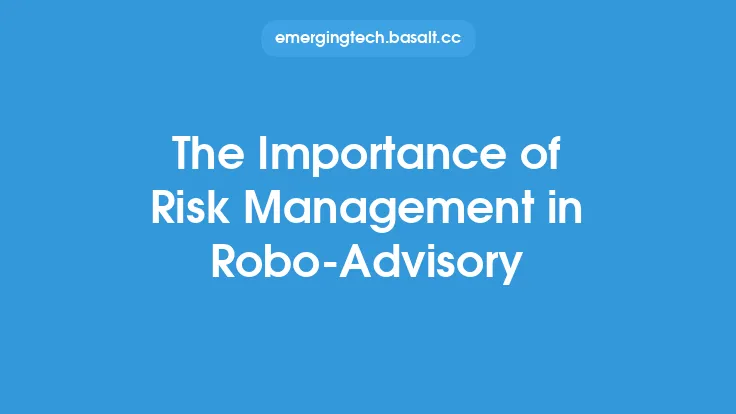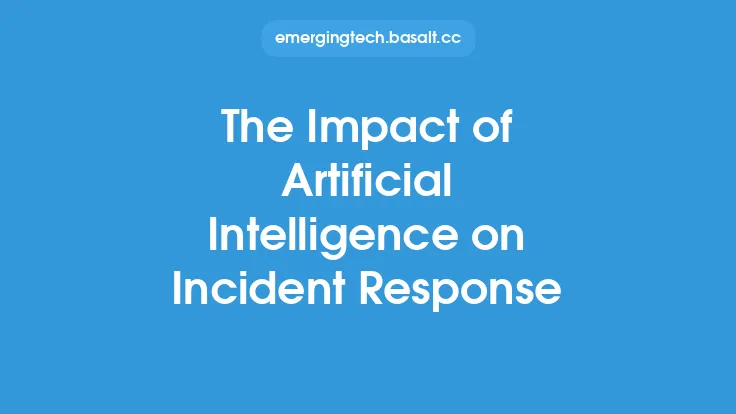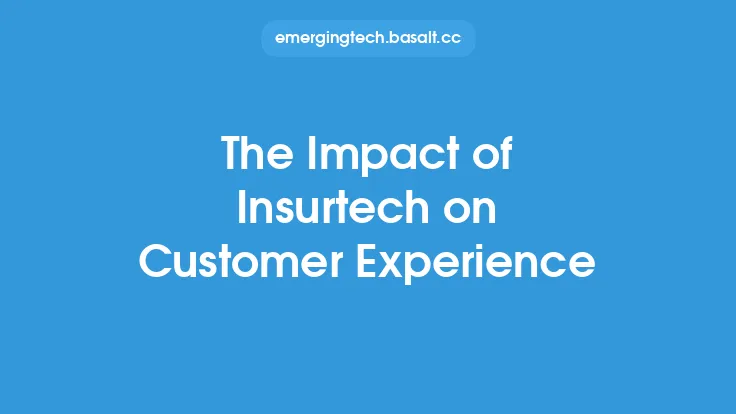The integration of artificial intelligence (AI) into robo-advisory services has been a significant development in the fintech industry. AI-powered robo-advisors have transformed the way investment decisions are made, portfolio management is conducted, and financial planning is executed. At its core, AI in robo-advisory services involves the use of machine learning algorithms, natural language processing, and data analytics to provide personalized investment advice and automate investment decisions.
Introduction to AI in Robo-Advisory
AI-powered robo-advisors utilize complex algorithms to analyze vast amounts of data, including market trends, economic indicators, and individual investor preferences. This enables them to provide tailored investment recommendations, optimize portfolio performance, and minimize risk. The use of AI in robo-advisory services has also led to increased efficiency, reduced costs, and enhanced customer experience. With AI-driven robo-advisors, investors can access a wide range of investment products, including stocks, bonds, ETFs, and mutual funds, and receive real-time portfolio rebalancing and tax optimization.
Key Components of AI-Powered Robo-Advisors
Several key components are essential to the functioning of AI-powered robo-advisors. These include:
- Data ingestion and processing: The ability to collect, process, and analyze large amounts of data from various sources, including market data, economic indicators, and investor information.
- Machine learning algorithms: The use of advanced machine learning algorithms, such as neural networks and decision trees, to analyze data and make predictions about market trends and investor behavior.
- Natural language processing: The ability to understand and interpret investor requests, preferences, and goals through natural language interfaces, such as chatbots and voice assistants.
- Portfolio optimization: The use of optimization techniques, such as mean-variance optimization and Black-Litterman models, to create diversified portfolios that balance risk and return.
- Risk management: The ability to identify, assess, and mitigate potential risks, such as market volatility, credit risk, and liquidity risk.
Technical Aspects of AI in Robo-Advisory
From a technical perspective, AI-powered robo-advisors rely on a range of technologies, including:
- Cloud computing: The use of cloud-based infrastructure to store, process, and analyze large amounts of data.
- Big data analytics: The application of advanced analytics techniques, such as Hadoop and Spark, to process and analyze large datasets.
- Machine learning frameworks: The use of frameworks, such as TensorFlow and PyTorch, to build and train machine learning models.
- Application programming interfaces (APIs): The use of APIs to integrate with external data sources, such as market data providers and custodial banks.
- Cybersecurity: The implementation of robust security measures, such as encryption and firewalls, to protect investor data and prevent cyber threats.
Benefits of AI-Powered Robo-Advisors
The integration of AI into robo-advisory services has numerous benefits, including:
- Personalized investment advice: AI-powered robo-advisors can provide tailored investment recommendations based on individual investor preferences and goals.
- Increased efficiency: AI-driven robo-advisors can automate many tasks, such as portfolio rebalancing and tax optimization, reducing the need for human intervention.
- Reduced costs: AI-powered robo-advisors can reduce costs by minimizing the need for human advisors and optimizing portfolio performance.
- Enhanced customer experience: AI-driven robo-advisors can provide real-time portfolio monitoring, personalized investment advice, and seamless user interfaces.
- Improved risk management: AI-powered robo-advisors can identify and mitigate potential risks, such as market volatility and credit risk, through advanced risk management techniques.
Challenges and Limitations of AI in Robo-Advisory
While AI-powered robo-advisors have many benefits, there are also challenges and limitations to consider, including:
- Data quality and availability: The accuracy and availability of data can significantly impact the performance of AI-powered robo-advisors.
- Regulatory compliance: AI-powered robo-advisors must comply with relevant regulations, such as anti-money laundering and know-your-customer requirements.
- Cybersecurity risks: AI-powered robo-advisors are vulnerable to cyber threats, such as data breaches and hacking attacks.
- Lack of human judgment: AI-powered robo-advisors may lack the nuance and judgment of human advisors, potentially leading to suboptimal investment decisions.
- Dependence on technology: AI-powered robo-advisors are dependent on technology, which can be prone to errors, downtime, and other technical issues.
Future Developments in AI-Powered Robo-Advisory
As the fintech industry continues to evolve, we can expect to see further developments in AI-powered robo-advisory services, including:
- Increased use of alternative data sources: The use of alternative data sources, such as social media and sensor data, to inform investment decisions.
- Advances in machine learning: The development of more advanced machine learning algorithms, such as deep learning and reinforcement learning, to improve investment decision-making.
- Integration with other fintech services: The integration of AI-powered robo-advisors with other fintech services, such as payment systems and lending platforms.
- Enhanced user interfaces: The development of more intuitive and user-friendly interfaces, such as voice assistants and chatbots, to improve the customer experience.
- Greater emphasis on explainability and transparency: The need for AI-powered robo-advisors to provide clear explanations of their investment decisions and recommendations.





